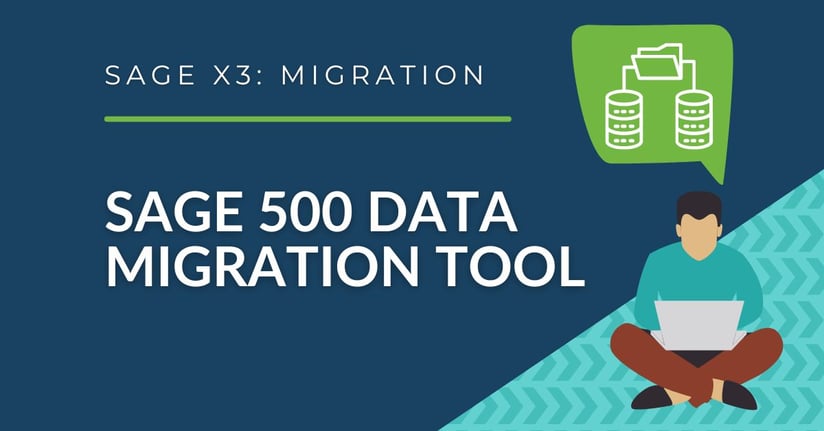One of the most important keys to a successful software implementation is the effective migration of Master Data. Without clean and meaningful Master Data, the training and testing of core business functions is not effective for the end users doing the validation. Fortunately, the new Sage Data Migration Tool (DMT) makes the Master Data transfer from Sage 500 to Sage X3 as seamless and painless as possible.
What is DMT and Why is it Important?
The Sage DMT was developed by Sage Software, then delivered to RKL’s Sage 500 and X3 implementation teams for internal beta-testing of all functions. The tool leverages the technology behind the Sage 500 Business Insights Views and Sage X3 Import Templates. The result is an error and issue-free data migration process from 500 to X3.
How Does DMT Work?
The data migration process is broken down into the following steps:
- Database scripts are run in the 500 database to create new SQL views that specify exactly what data needs to be pulled from the system.
- Business Insights views are created in the 500 application interface. While it’s possible to run the queries directly from the SQL views, RKL recommends running everything via Business Insights since there’s some additional validation logic applied to the extracted data. Below is a list of all the Business Insights views.
.jpg?width=292&height=364&name=DMT%20file%20folder%20(1).jpg)
- The extracted raw data files are copied and put into a new file location by the DMT tool to be processed. The DMT tool reads the raw data files into X3 templates that will be used for data cleansing during the import process into X3.
.jpg?width=800&height=462&name=DMT%20Directory%20Raw%20Data%20Files%20(2).jpg)
- The X3 templates include macros that read and import the raw 500 data. This step includes extra flexibility to add, remove or modify existing 500 data if any changes are desired for any master data (i.e. Customer IDs, Supplier IDs, Product IDs, etc.). This step also allows for regular data cleanup in general (i.e. leave an inactive customer behind). This is where the real work takes place!
What are some other cool features of DMT?
The DMT tool is free! RKL includes it as part of every 500 to X3 migration.
The DMT tool can also be used to migrate all open transactions (sales order, purchase orders, AR invoices, AP vouchers) as well as GL and Inventory information. Migration of these objects is a very important step during the Dry Run phase right before X3 go-live.
The templates have auditing capability that will vet the data against what X3 will accept. This avoids running imports that will fail.
As the raw data in 500 changes, the exported views can be re-generated and re-pulled into the templates, updating them without affecting the formulas and corrections that were already made.




